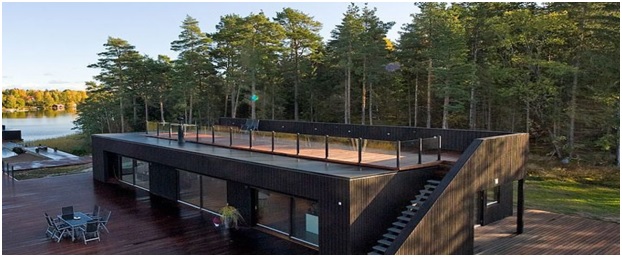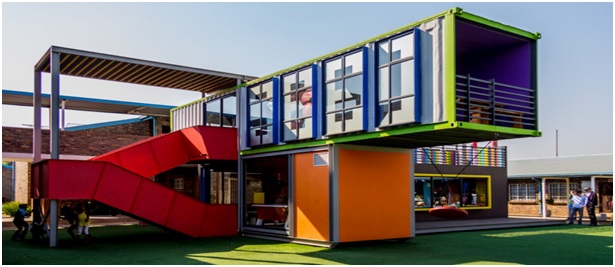Shipping cargo units are no longer used only to transport products or goods. There is an impressive and creative expansion when it comes to these sturdy metal structures. It has resulted in the growth of a lot of shipping container building trends. There are a lot of benefits of using these types of materials as the primary foundation for your next construction.
For many years, there have been fantastic uses of cargo units outside of its product transporting use. People are starting to see its potential for using them as an excellent building items from which a lot of things can be made.
From art studios, office space, tiny homes with swimming pools, the uses of these materials are almost infinite when it comes to building structures. It can only be limited by what you can imagine. Listed below are some surprising uses of shipping container units that you might be surprised to know and see.
Want to know more about the kinds of building materials, visit https://simplicable.com/new/building-materials for more information.
Swimming pools
Having a swimming pool at your place is both beautiful and refreshing, but knowing that you can have a pool made out of a shipping container is way cooler. Not like the usual above-the-ground swimming pools that are fragile, a cargo container swimming pool is very sturdy, durable and robust, and yet can be transported just like any other regular cargo unit (water removed).
The skinny and long shape also make it excellent for swimming laps. These kinds of pools are usually outfitted with the help of a dropped-in liner or a sealant in order to keep the water from touching the metal walls. There is some traditional pool equipment involved like filters and water pumps, although some of it depends on the kind of system and chemicals you want to use.
It is also possible to fully bury a pool, although it presents some of the similar challenges when immersing a cargo container unit for other reasons. Some homeowners choose to provide elevated decks around the unit, that can provide the same benefit like walking area that is leveled with the water, without the issues present when it is buried.
Medical facilities
The Salam Cardiac Surgery Center that is based outside Khartoum in Sudan that can facilitate 63 patients and 300 local staff is built with traditional building materials. On the other hand, its nearby housing area for their international team is made of 90 20-footer cargo container units.
Each room uses more or less one and a half units. It also has a functioning cafeteria made of seven 40-footer units. Usually, these containers were not part of the design, but architects who designed it saw an empty secondhand unit to bring materials to the site and felt inspired to use them as part of the facility.
Restaurants
One of the best Mexican restaurants based in London, the Wahaca, has a lot of branches all over the city. The branched that is based in Southbank Center caught our attention because the building was constructed using shipping cargo units. All of the units have been altered into a street store so people can get food to go. The restaurant, which looks like an anglicized version of Oaxaca, is known for serving authentic Mexican foods.
Now, they are also known to have one of the best architectural design among restaurants in London. People can eat inside the restaurant, which has huge glass windows to provide a view of the Thames River, or they can eat outside of the building. The inside of Wahaca is decorated with benches made from recycled materials adding to its Eco-friendly theme.
Hotel
The hotel that is made using container units in Kuala Lumpur, Malaysia, called The Container Hotel makes no secret of the structure’s origin. Shipping cargo units are centered and front in the design of the building and is the main foundation of the hotel’s facilities and rooms, spanning several spaces and levels.
If you are interested in these types of buildings, you can check out shipping container in Chicago on the Internet. There are a lot of websites, forum posts or social media posts regarding this topic.
School
Another excellent use of this material is a school. A school in Ensenada, Mexico called Montessori La Milpa. It is located on the Pacific area of the Baja peninsula. It is built using cargo units for durability, as well as fewer maintenance costs. Because of its location (located near the ocean), the school takes advantage of the cool sea breeze, as well as the mild climate provided by the sea.

Art studio
It is not every day that you find an excellent art studio that is as good as the art it houses in. Andrea Shapiro’s 840-square foot studio was built adjacent to her house in Amagansett, New York, as a way to create and display her artwork.
The place is a two-story building that uses a two 40-footer shipping container van that was set on top of a sturdy concrete stem wall and forms a partially buried cellar. It was made for just under $60,000 and is a striking opposite to the forested area that surrounds the structure.
To find out more about shipping container architecture, click here.
Office
A production and event management company in Los Angeles that helps charity groups with fundraising activities called Pallotta Team Works have seen a growth in their business that led theme into expanding into a large warehouse.
But because of their budget problems, it prevented them from doing a traditional office interior renovation. Instead, the company used shipping cargo in their warehouse as their office and used tents that are anchored between the units to contain their workspaces for their different departments. Their tents also funnel the conditioned air to the workstations; it means that the open area of the office is not climate controlled to save a lot of money for the utility bills.
Bonus structure: Starbucks
Yes, even the most popular coffee shop franchise in the world has joined the container bandwagon, with more or less 40 locations made from cargo vans. The company’s increased adoption of this kind of building material is not a surprise at all since they allow for faster construction and a small carbon footprint on the site that can otherwise be too awkward for a traditional coffee shop structure.

